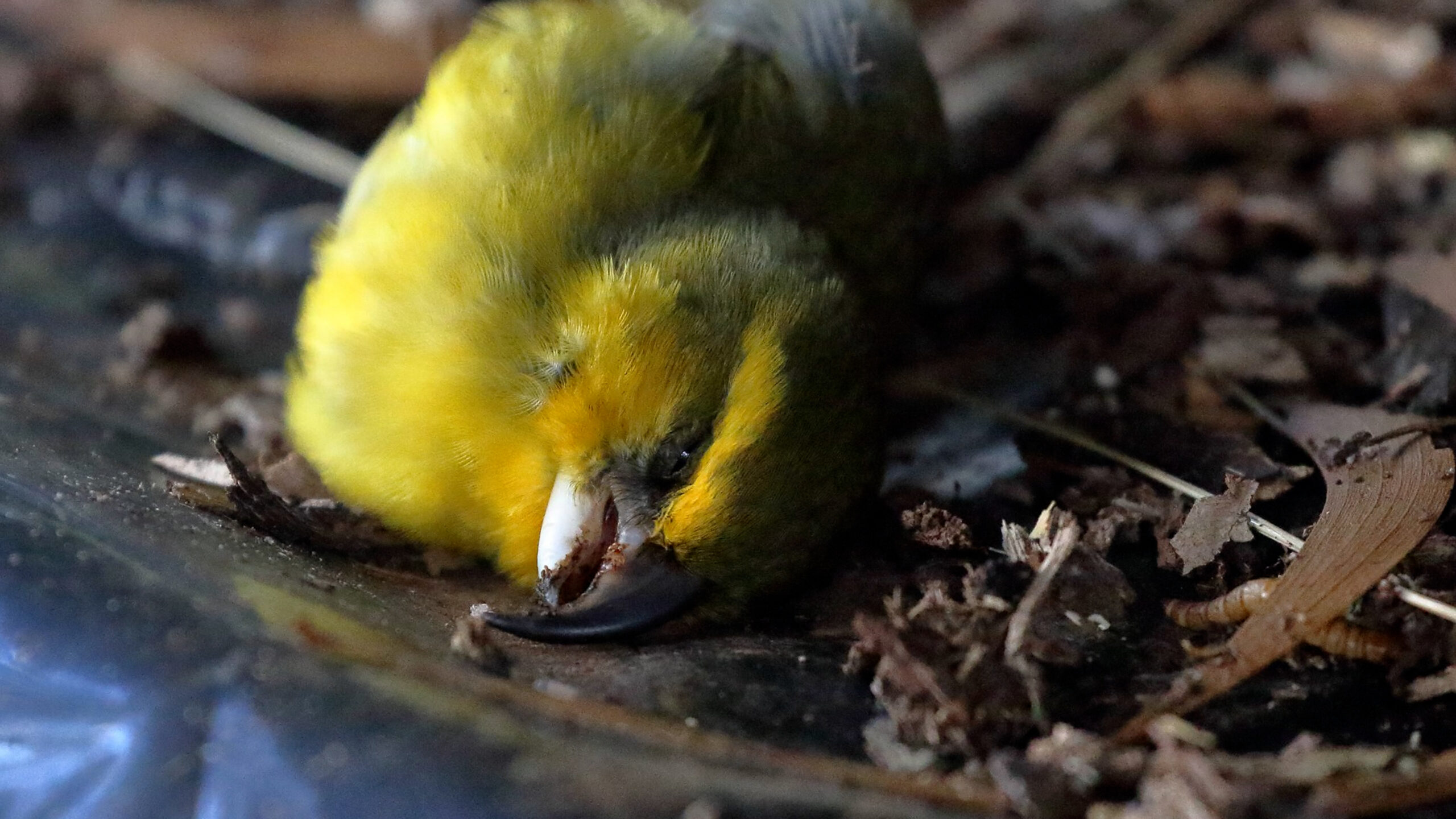When a disease is brought to a location where it wasn’t previously present, it is considered an introduced disease. Introduced diseases typically have a bigger impact on wildlife than native diseases, because exposed species haven’t had time to evolve natural defenses to fight off the novel pathogens.
In a healthy ecosystem, introduced diseases might represent only a temporary setback for impacted species. However, this threat can be devastating for an endemic species with a small natural range, or for species already brought close to extinction by threats like habitat loss and hunting. In these cases, a single outbreak could wipe out all members of a species before they have time to adapt. On the isolated islands of Hawaii, for instance, several endemic Hawaiian honeycreeper species face extinction due to avian malaria, a disease likely introduced from mainland Asia.
But there are ways to reduce the spread of introduced diseases and limit their impact when they do arrive. Restricting international wildlife trade is one way to stop the spread of disease, as this is thought to be a major way that potential disease carriers are introduced into new environments. Wildlife populations also tend to be more resilient to disease if they are healthy and genetically diverse. But when introduced diseases do hit fragile populations, conservationists can sometimes turn to cutting-edge solutions such as vaccines or even mosquito birth control.
